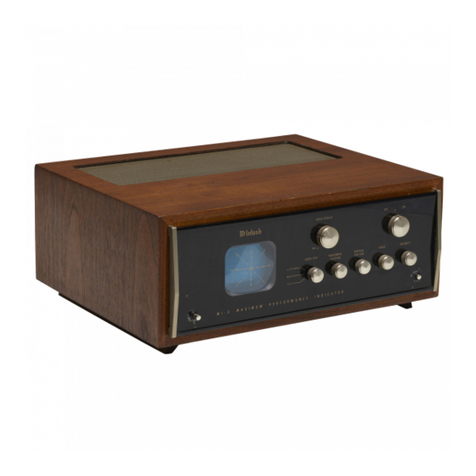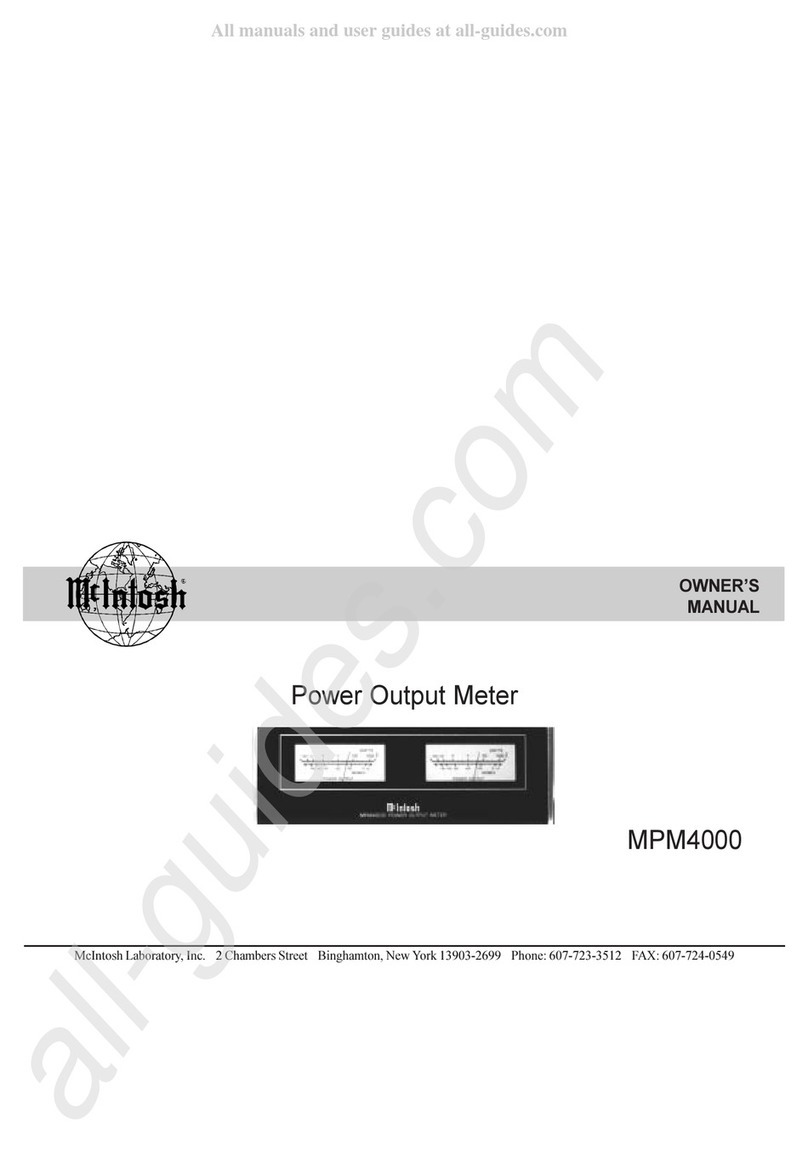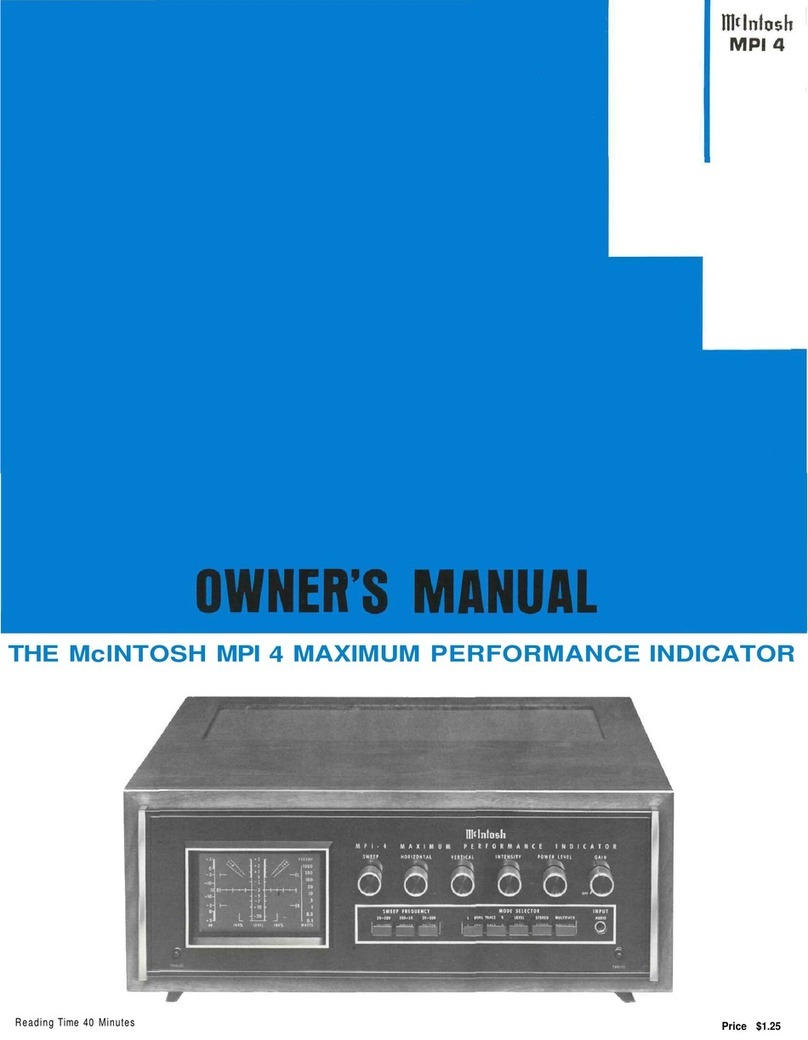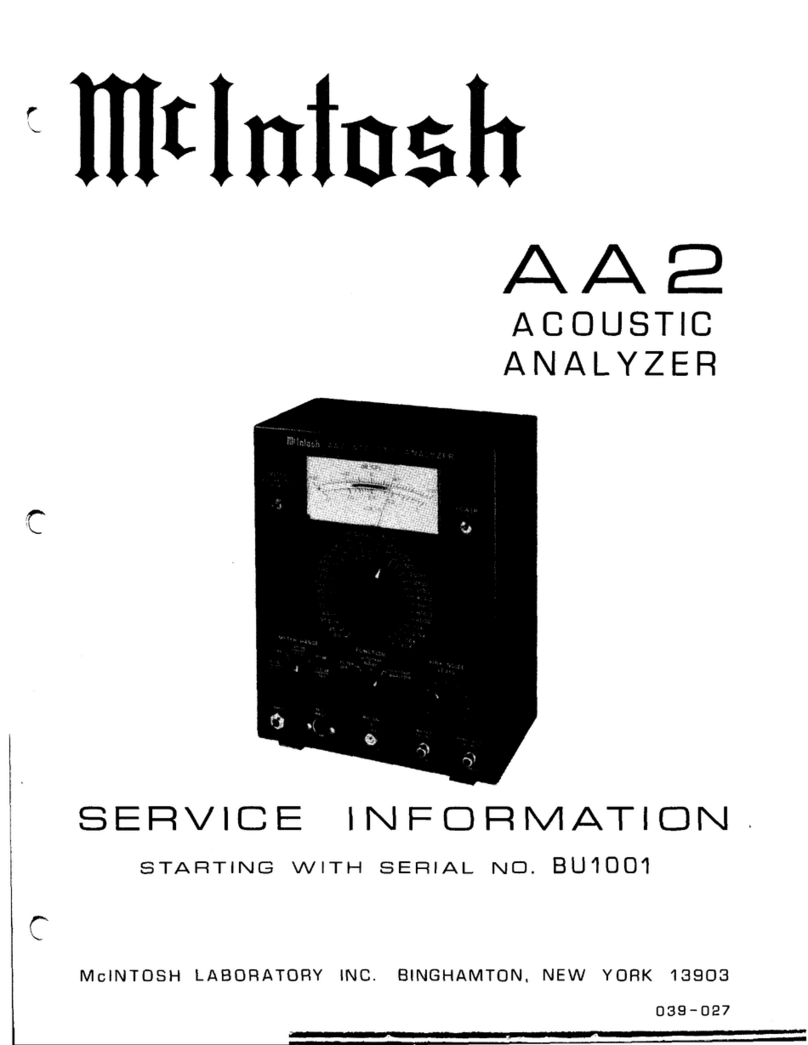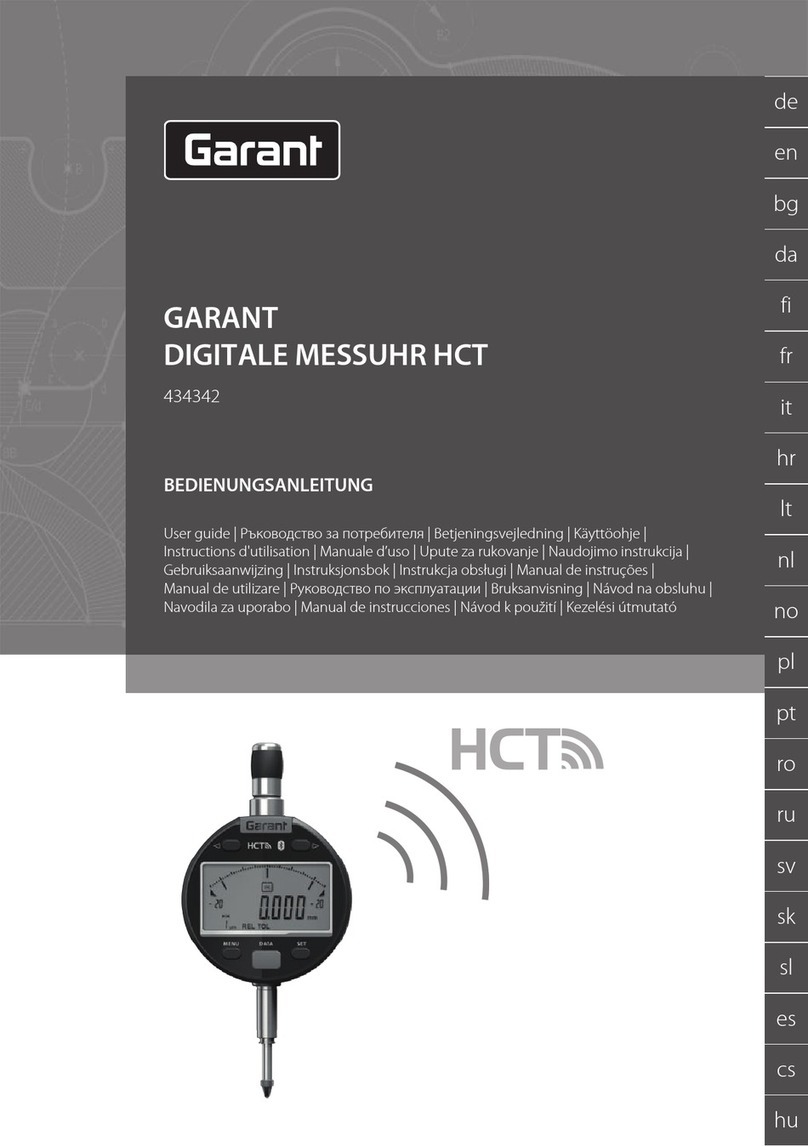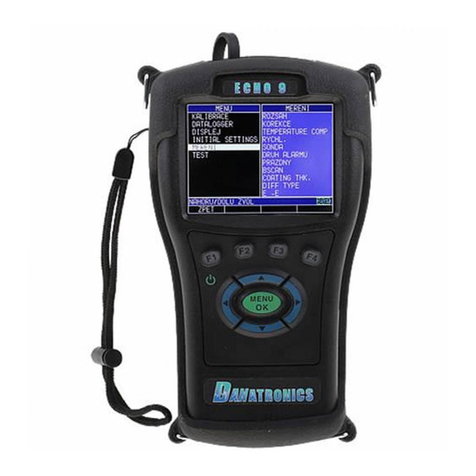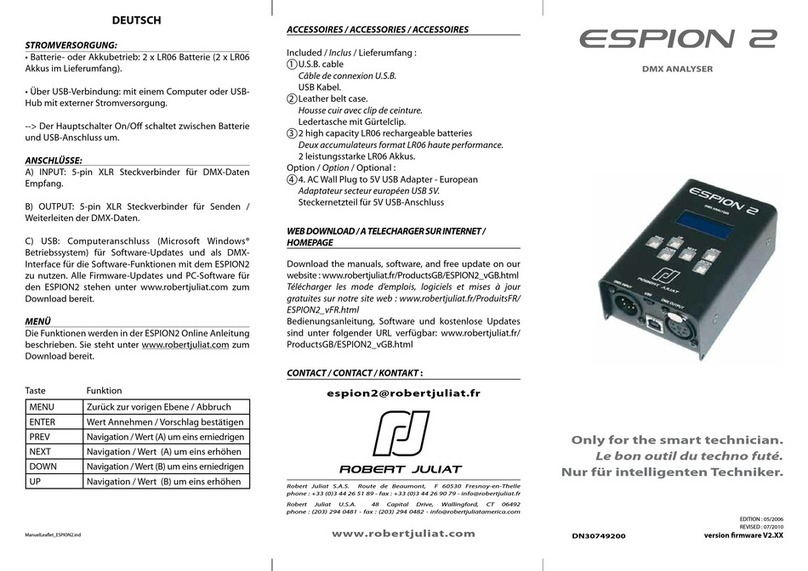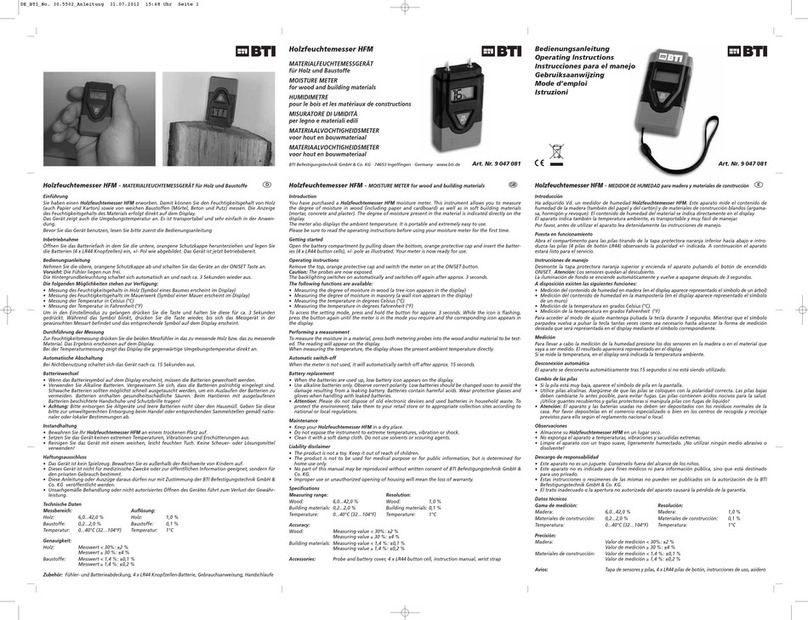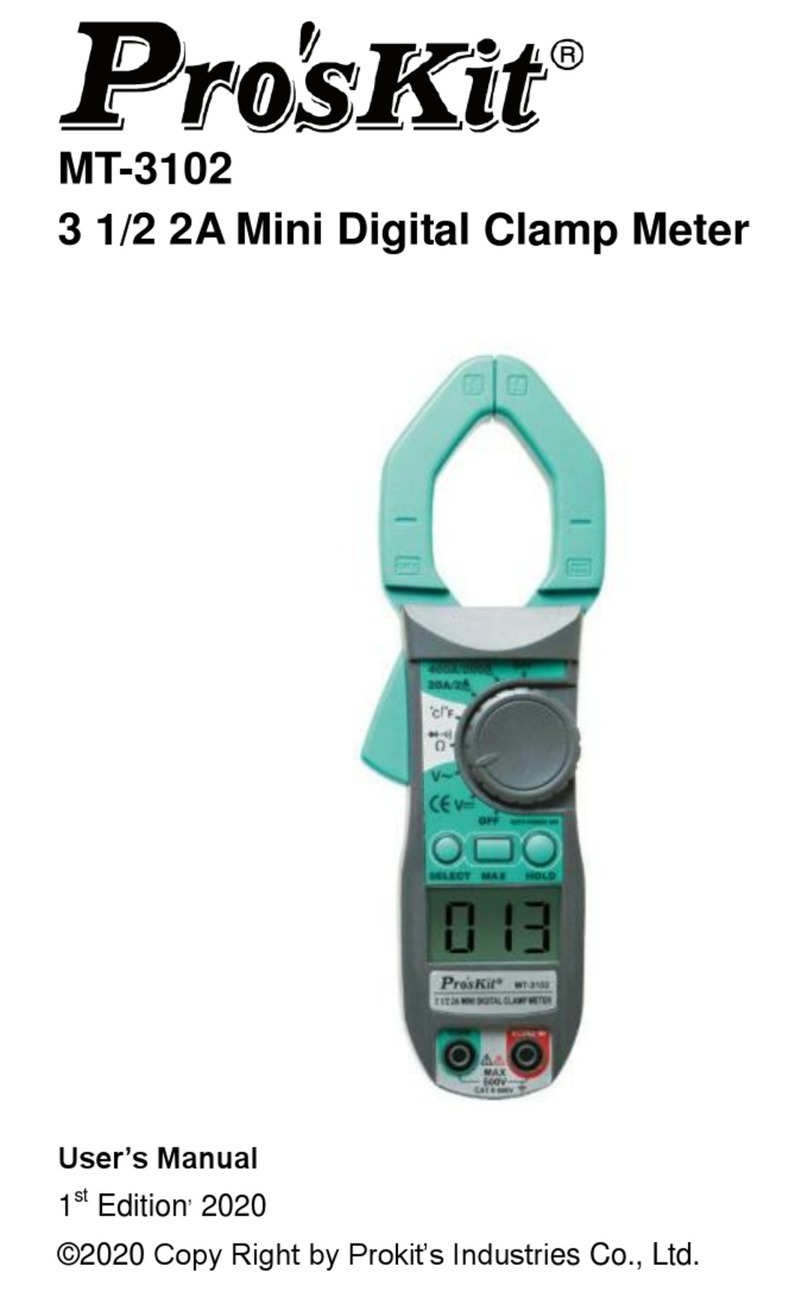McIntosh Forage Wagon User manual

MCINTOSH
Forage Wagon
User Manual
McIntosh Brothers Engineers Ltd
Phone 06 356 7056 - Fax 06 356 7055
PO Box 4240
PALMERSTON NORTH 4442
NEW ZEALAND
www.mcintosh.net.nz

WARRANTY CONFIRMATION AND CUSTOMER DECLARATION
Your new wagon is guaranteed for a period of 12 months from date of entering service, provided that such
equipment has not been subject to improper usage and or overloading or any other conditions contrary to
the manufactures specifications or recommendations.
Your dealer representative has instructed me on the correct use of the wagon and the adjustment and
maintenance requirements, and the need to check wheel nuts and other bolts as per the operation manual.
Your dealer must fill out this form below and send back to McIntosh Brothers within 14 Days.
Purchaser’s or Agent’s Declaration. I have been instructed in, and understand the hazards, and the safe
operating instructions and safety controls applicable to this machine including the need for further training.
I understand and accept responsibility to train any operator to follow the safety measures.
Model ______________________________________________ Serial # __________
Owner’s Information Dealer’s Information
Signed _______________________________ Signed ____________________________
Owner ______________________________ Company ____________________________
Date ____/____/_____ Salesperson __________________________
Date ____/____/_____
Please return this completed form to;
McIntosh Brothers Engineers Ltd
PO Box 4240
PALMERSTON NORTH 4442

McIntosh Machine Warranty Conditions
Dear Customer,
Thank you for purchasing your new McIntosh machine. Please ensure that you read the operators
manual and warranty conditions thoroughly and have your dealer explain the operation,
maintenance and safety features of the machine.
GENERAL CONDITIONS
Warranty Period
12 months from the date of delivery and installation.
The warranty is limited to the repair of defective parts and/or components, the supply of
replacement parts, and the direct labour cost for the fitting of the replacement or repair parts
(and/or components), in accordance with the manufacturer’s repair time schedules, or at
McIntosh’s discretion.
Owner’s Responsibilities
The owner must:
•Read the machine’s operators manual carefully to learn how to operate and service the
machine safely and correctly.
•Teach all operators how to operate and service the machine safely and correctly.
•Operate the machine strictly in accordance with the instructions in the operator’s manual,
taking into account the machine’s application and limitations at all times.
•Maintain and insure their machine at their own expense from the first day of installation in
accordance with operator’s manual, including all scheduled service and maintenance
checks.
•Notify the authorised dealer of any fault in the machine as soon as it becomes apparent.
The owner must then make the machine available on request for repairs to be carried out.
Failure to do so may make the owner liable for any further or consequential damage and
associated costs.
•For warranty repairs you must either clean down the machine ready for repair or pay for
the cost of cleaning.

GENERAL OPERATION
AND
MAINTENANCE INSTRUCTIONS
Forage Wagon
MANUFACTURED BY
McINTOSH BROTHERS
ENGINEERS LTD
PALMERSTON NORTH
NEW ZEALAND
DISTRIBUTED BY

Safety
must have
PRIORITY
•Maintain your machine in good working condition.
•Keep all guards and shields in place.
•Disconnect hydraulic supply lines when any maintenance, greasing or
adjustments are undertaken.
•Keep hands, feet, clothing, away from power driven parts.
•Keep other people clear of machine when in use.
•Always shut down hydraulics when you leave the tractor seat.
•Do not allow people to travel on your forage wagon.
HUMAN ERROR IS THE MAJOR FACTOR IN
ACCIDENTS

Check List PRIOR to Operation
•Never run forage wagon at over 36 kph as damage could occur.
•Remove wires holding the centre feed discharge flaps. These have been used
for transportation purposes only.
•Adjust centre feed flaps to approximately 600mm. This measurement will vary
depending on type of material being fed out.
•Look over all bolts to check none have come loose after transport from
factory.
•Check all wheel nuts for tightness.
•Connect hydraulic hoses to tractor, run up machine, and check slow and fast
feeds of floor chains.
•Please show all persons operating this machine the manual before operating
for the first time.
The first time you use your wagon, if the floor does not move forward, screw the
bronze pressure valve knob which is under the valve, in ½ a turn at a turn until
the floor starts to move forward.
NOTE: ALL MACHINES ARE RUN UP PRIOR TO LEAVING THE FACTORY
BUT THE ABOVE STEPS SHOULD BE DONE PRIOR TO USE

GENERAL OPERATING INSTRUCTIONS
•Never load higher than sides; load evenly.
•Tease materials out when loading.
•Load clear of elevator where possible.
•Run machine in neutral position to clear elevator prior to engaging floor
chains. (NOTE this mainly refers to heavy loading).
•Make sure the cross conveyor (if fitted) is clearing materials properly.
•If a build up occurs, this can result in material being taken back around the
elevator.
•When feeding two crops together, load the lighter material on bottom.
•Use slow speeds for wet or heavy materials.
•For even feeding load the machine evenly.
•Tractor ground speed is approximately 6-8 kilometres per hour, but this will
vary to suit conditions and density of row you require.
•Never run full load on fast speed. Place speed control in slow position and
operate in this manner. Use fast speed when clearing the last 20-25% of load.
•When cleaning the machine, turn the tractor hydraulics off as well as the
tractor itself before leaving the tractor seat.
•When clearing any blockages or checking the machine for faults, turn the
tractor hydraulics off as well as the tractor itself before leaving the tractor
seat.

GREASING AND MAINTENANCE
Make sure your machine is well greased (refer to list for greasing points).
Wagon Grease Nipples
Swivel 1
Jack 1
Conveyor 4
Elevator (2 chain) 9
Elevator (4 chain) 15
Floor shaft (2 chain) 4
Floor shaft (3 chain) 4
Floor shaft (4 chain) 5
Single axle 2
Tandem axle 6
Floor idlers 1 per chain
Grease all nipples daily for the first week when in use, then weekly after that. If you are doing a
lot of travelling, then the axle pins should be greased more often. Grease daily if the wagon is
being used all day and doing a lot of kilometres. Check wheel bearings periodically.
Grease drive chains regularly, oil floor and elevator chains periodically which will give smoother
running, particular when the machine has not been used for a while.
Check floor and elevator chains after the first three to four loads for tension and then once per
week when in use. (See illustration I) for adjusting.
If the floor or elevator chains get to the stage where it is possible to cut two links off each side
then do so. If the chains are adjusted out further and further then at some point serious damage
will be caused.
Floor slats bolts should be tightened up after the first week of operation and then monthly after
that.
Check the cross conveyor belt regularly. If the tracking strip in the middle of the belt on a 900 wide
conveyor or on the outsides on a 1200 conveyor is starting to climb the roller then the belt needs
to be adjusted. The belt needs to be flat across the width of it otherwise damage will occur. If you
are unsure about the tracking strip, please ring your supplier or us.
Check cross conveyor rollers for any build up of silage. If build up exists, remove the belt and clean
thoroughly. Build up causes belt stretching and shortens belt life.
The cross conveyor belt should be removed once a year so that any build up of material can be
cleaned out.

Grease is cheap - use it. Set a time each week to adjust and grease your wagon and you will save
money and hassles in the future.
STORAGE
When machines are not in use, wash down thoroughly and apply a good coating of oil to the body,
elevator and floor chains (half oil/half diesel does the job well).
BELT CONVEYOR
Slacken off cross conveyor belt adjusters which will eliminate the belt sticking to belt cover strips if
the machine is not in use for a period of time.
ROLLER CHAIN CONVEYOR
Oil the roller chain when finished for the season, otherwise the links may seize up.

ELEVATOR CHAINS
To check adjustment, press chains vertically towards the elevator frame and there should be no
more than 20-25mm deflection.
FLOOR CHAINS
To tension up floor chains, have one floor slat directly under the rear cross member. Adjust up
floor chains until there is a 5mm gap between the floor slat and the angle iron of the bottom body
at both ends of the slat.
SAFETY
Always disconnect the wagon from tractor hydraulics before making any adjustments or working
on the machine.

CROSS CONVEYOR BELT ADJUSTMENT
McIntosh Brothers Forage wagons are fitted with a tracking strip on all cross conveyor belts. If
your belt does require adjusting, it may be due to belt stretch or material build-up under the belt.
Use the following procedure:
1. Check rollers and conveyor tray for any material build up. If some exists, slacken off the two
rear adjusters and remove the belt joining pin. This will allow access for cleaning.
2. When clean, re-join the belt and adjust to the previous position.
3. Start the machine and run up to check for belt alignment and tension.
4. If the belt is off line, tighten the rear adjuster on the side the belt is running off on. Only move
the adjuster ¼ to ½ turn per time and allow machine to run three to four minutes for the belt
to retrack, repeat procedure till correct position is achieved (see illustration No. II) for adjuster
position.
5. Never over tension the belt as this can cause stretching and put more strain on the rollers.
Make sure the adjuster lock nuts are firmly tightened after completion. For correct tension
adjustment to take out belt slack, tighten further by 6mm. For further advice, regarding
adjustments check with your Supplier or the Manufacturer.


HYDRAULIC VALVE
There are two adjustable settings on the valve
•Floor speed control
•Floor pressure relief setting
Floor speed control
(See illustration No III)
The floor should not be moving when the indicator is against the slow stop. To adjust, undo the
bolt on the clamp and turn the control lever till the floor stops moving.
Floor pressure setting
This is the adjustable cartridge on the bottom of the valve. This valve will divert the oil from going
to the floor motor, it will instead go back to the tractor. The oil is diverted when the floor is
getting overloaded and will go back to the floor motor once the elevator has cleared the load
against it. To get more pressure to the floor, undo the locking nut on the valve, then screw the
knob clockwise ½ a turn at a time, then run the wagon to check if this is the correct setting for
your tractor and loading. To get less pressure to the floor, turn the knob anti clockwise.
You may need to screw the valve in:
•The first time you use the wagon and the load does not come forward.
•If you travel further and get more compacting.
•If you load the wagon at night and it rains. This will make the load heavier.
•If you change pits and the second pit has heavier silage.
If you screw the valve right in and leave it there, you will have very little protection on the floor.
If you then have a jam there is a good chance, you will do damage to the machine.
The motors and valve on the wagon are sized and set to meet the size load the wagon can carry
with the average tractor oil flow and pressure that could be pulling the wagon. With smaller
wagons, you can get away with a tractor that may not be up to specifications with flows and
pressure, but when you get up to the larger wagons, if the tractor has not got the performance or
not working to its specifications, then the wagon may not feed out as expected.


REAR DOOR ADJUSTERS
(See illustration no IV)
Spring loaded catches are fitted as a precaution against faulty machine use, such as engaging
reverse when fully loaded by mistake.
When rear unloading, a manual trip rope is more practical than relying on the spring loaded
catches due to variable ground contour.
Grease can be used on pin and catch, but remember this will probably allow the door to open
more easily.

Reasons for the wagon not performing correctly
The valve pressure setting is wrong.
A problem with the tractor
•the tractor is too small oil wise for the wagon or loading
•the pump is not working to its full capacity
•tractor relief valves are not working properly
•quick release fitting is not letting enough oil through
A valve in the hydraulic block not working correctly due to something in the oil jamming the valve
either opened or closed.
Cross conveyor
•Belt too loose
•Belt not adjusted correctly
•Keys loose in coupling between hydraulic motor and roller
•Bearing problems
Reasons to alter the pressure settings
Turn the valve in to increase the pressure to the floor because the floor will not move.
•First time using the wagon and the floor will move forward
•Load compacts while travelling
•Load left overnight and has compacted
•Feeding out a very heavy material
Turn the valve out to decrease the pressure to the floor when there is too much material coming
over the top of the elevator.

COMMON FAULT PROBLEMS
•If the floor or elevator chains get to the stage where it is possible to cut two links off each
side then do so. If the chains are adjusted out further and further then at some point
serious damage will be caused.
•If the valve is screwed right in and left there, there will be very little protection on the
floor.
•Please show all persons operating this machine the manual before operating for the first
time.
•These wagons are designed to operate at 30-40 litres per minute. If the machine is run at
60-80 litres per minute, the wear and tear is accelerated on the chains and belt by
approximately five times.
•Most problems occur by lack of maintenance and adjustments. Save yourself money and
hassles.
•Machines need to be greased/adjusted regularly. There is no excuse for not making time
to do this. If you do not grease or adjust the chains, you will have problems with the
machine. When problems do occur, chances are that they will be at the worst time.
TYRE PRESSURES
Tyre Size PSI
11.5/80-15.3 69
12.5/80-15.3 68
400/60-15.5 50
15/70 x 18 62
500/60-22.5 44
550/60-22.5 40
600 x 40 x 22.5 41
600/50-22.5 39
385/65 R22.5 68
Table of contents
Other McIntosh Measuring Instrument manuals
Popular Measuring Instrument manuals by other brands

PCE Health and Fitness
PCE Health and Fitness CMM 8 user manual
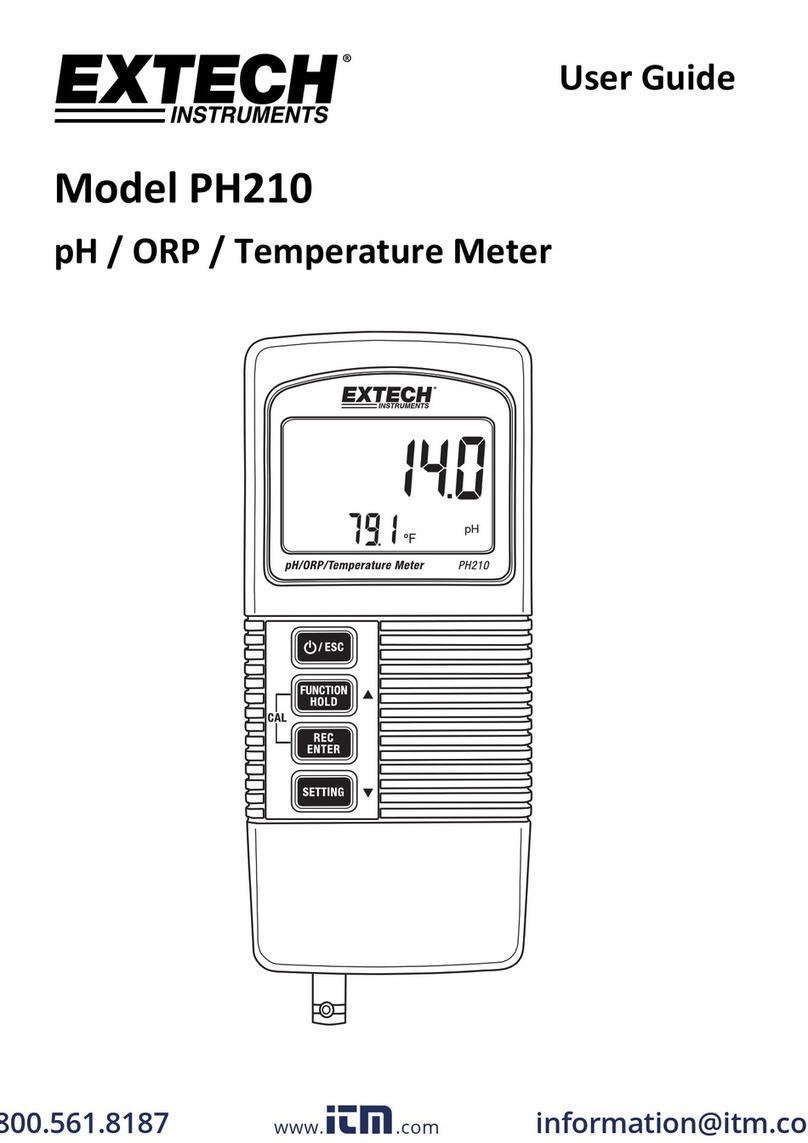
Extech Instruments
Extech Instruments PH210 user guide

Industrial Scientific
Industrial Scientific GasBadge Pro manual
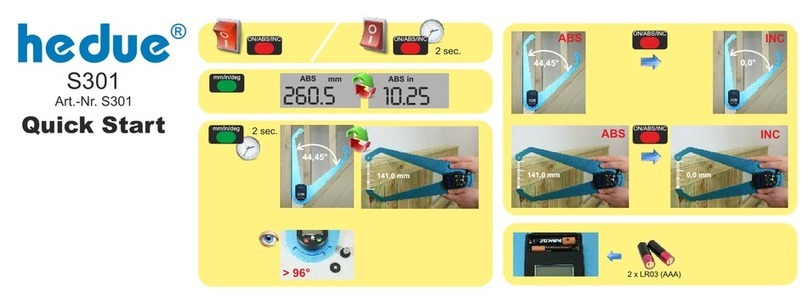
Hedue
Hedue S301 quick start
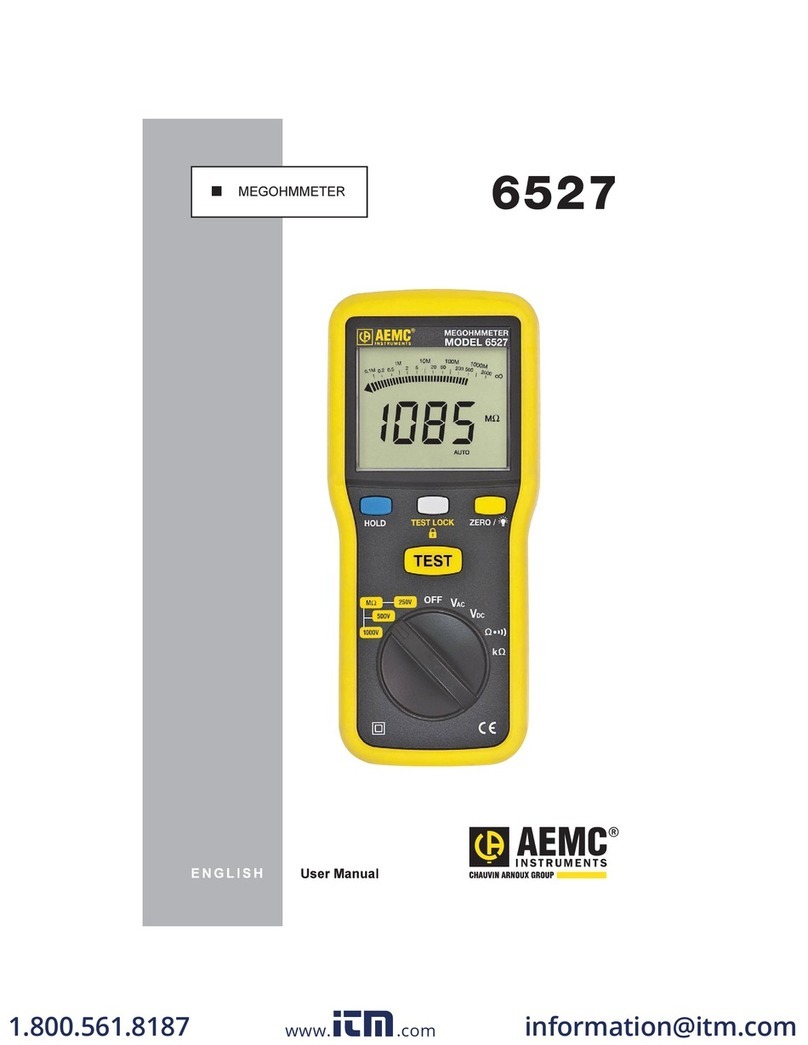
AEMC instruments
AEMC instruments 6527 user manual

Murphy
Murphy ATS series installation instructions
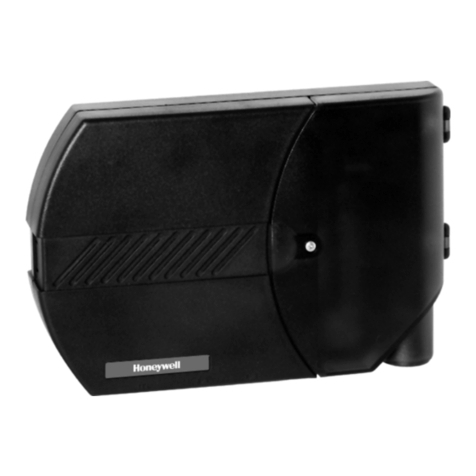
Honeywell
Honeywell W8710A manual
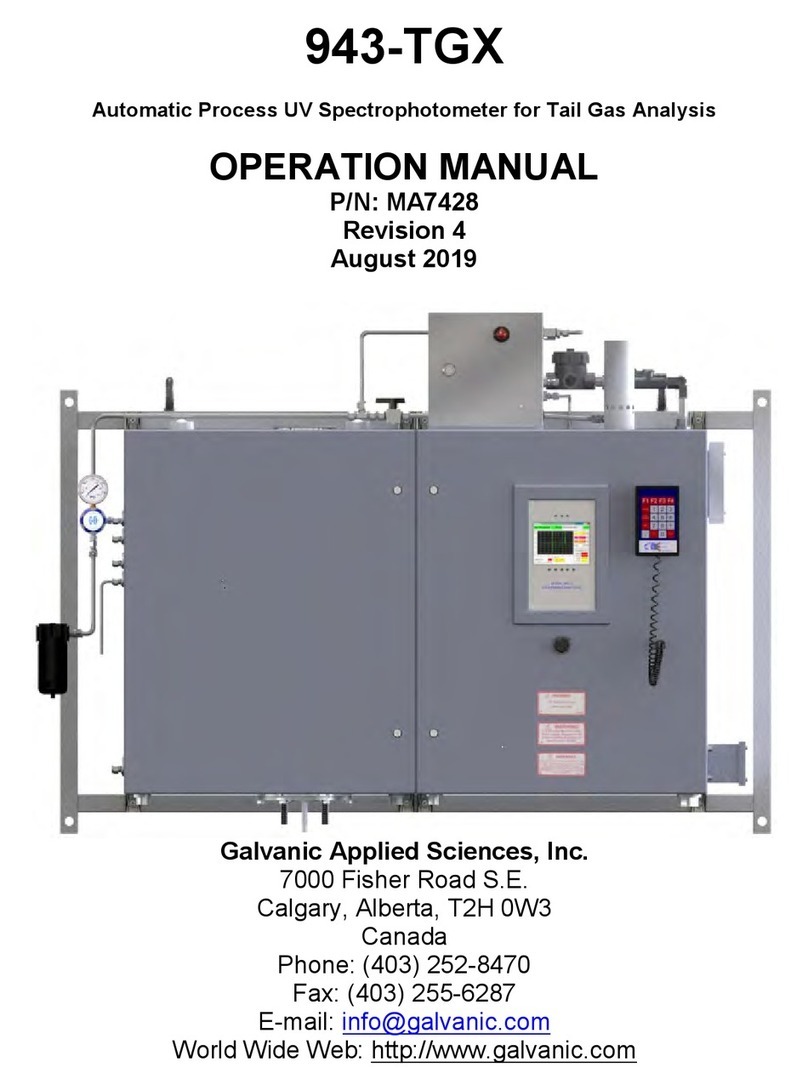
Galvanic Applied Sciences
Galvanic Applied Sciences 943-TGX Operation manual
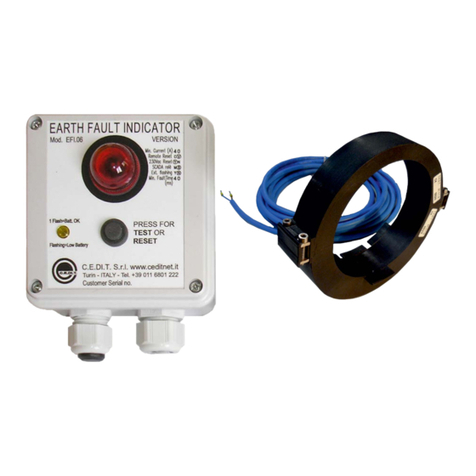
C.E.DI.T.
C.E.DI.T. EFI.06 product manual

Jäger
Jäger ADwin-Pro System and hardware description
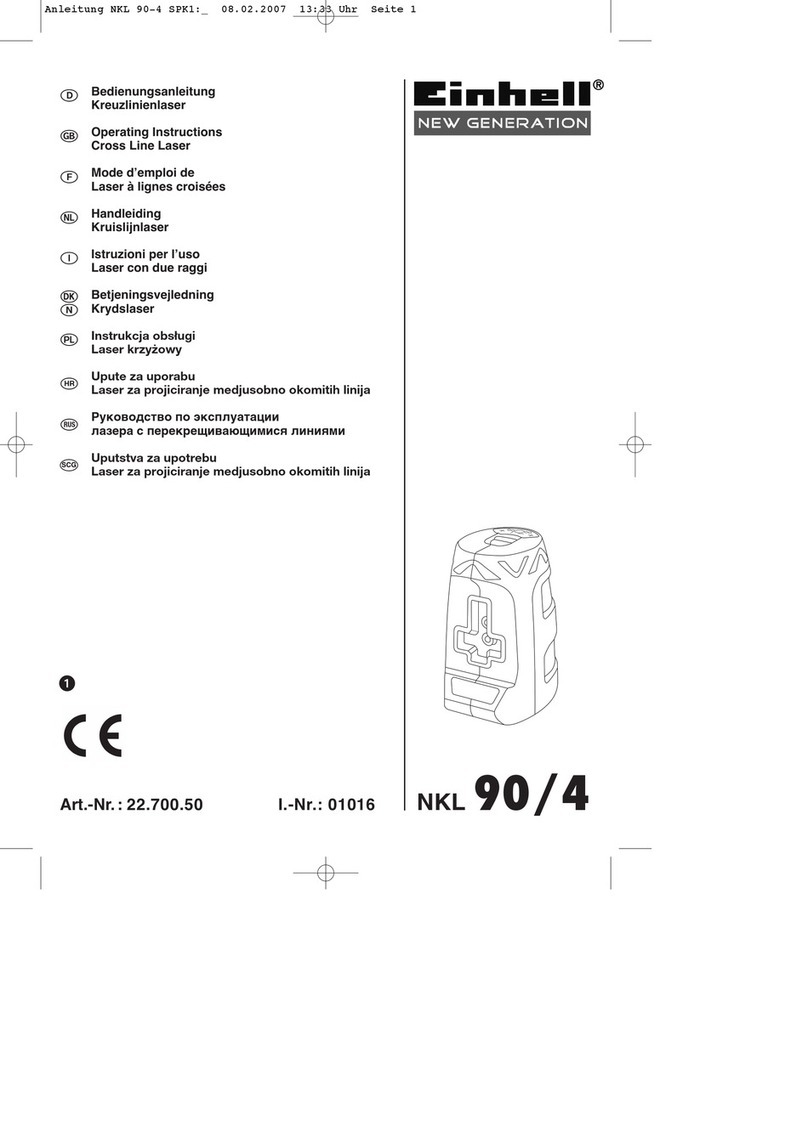
EINHELL
EINHELL NKL 90/4 operating instructions

General Monitors
General Monitors S800 instruction manual
